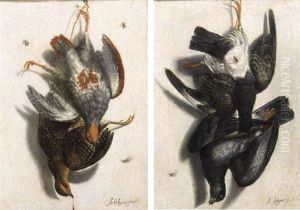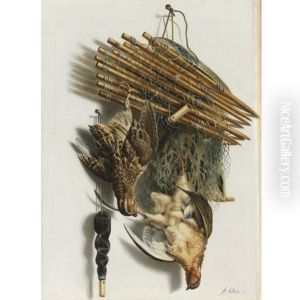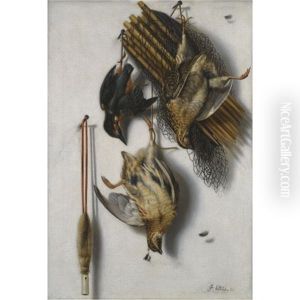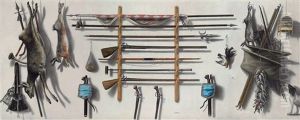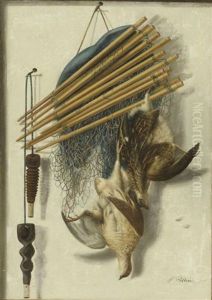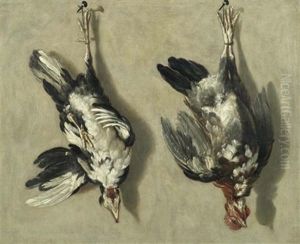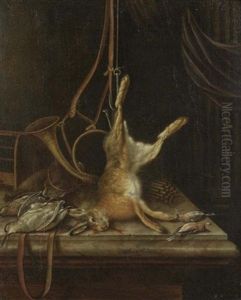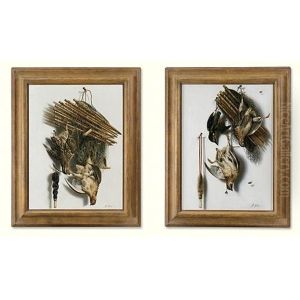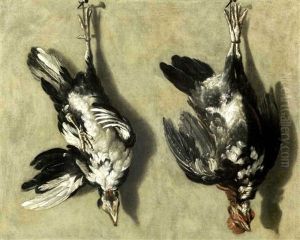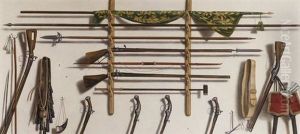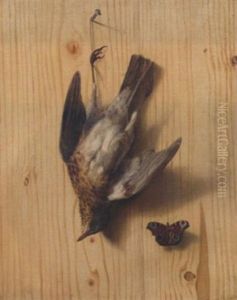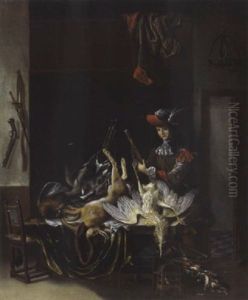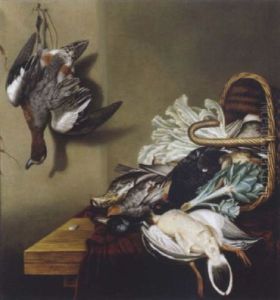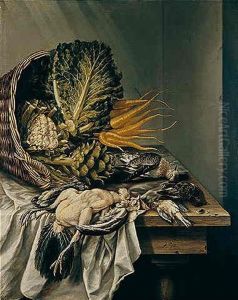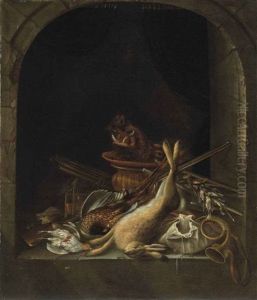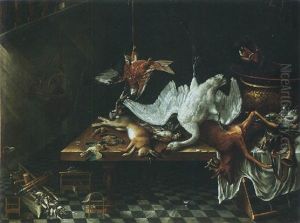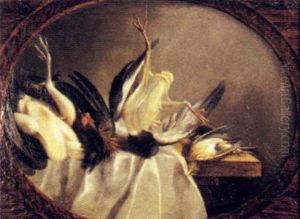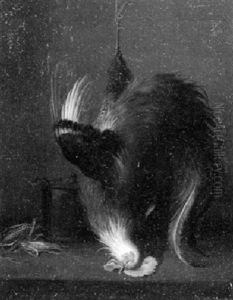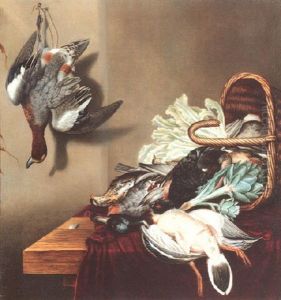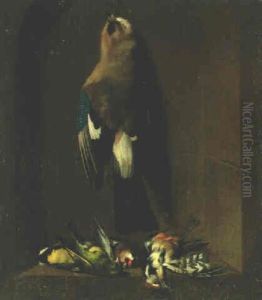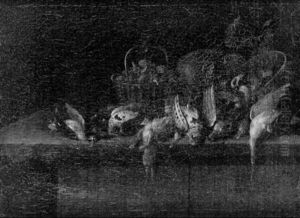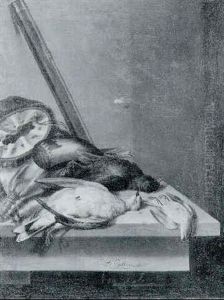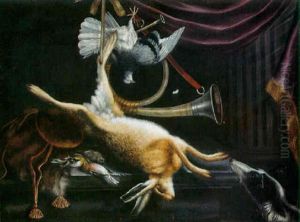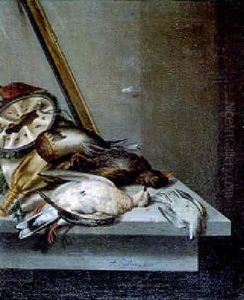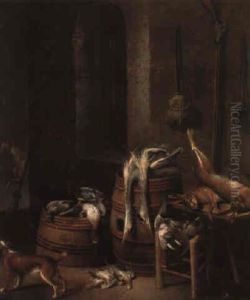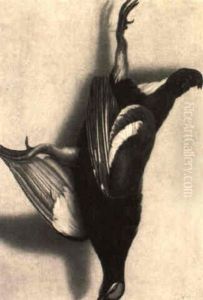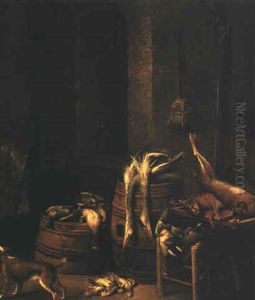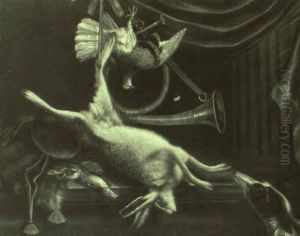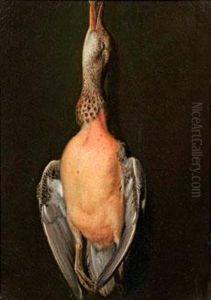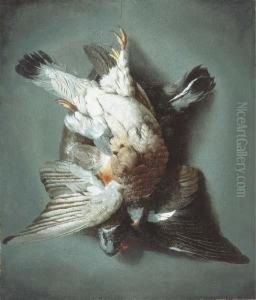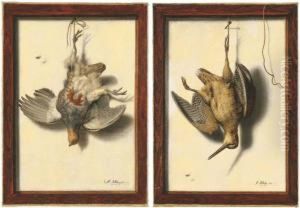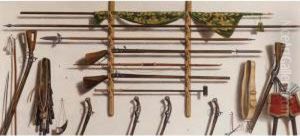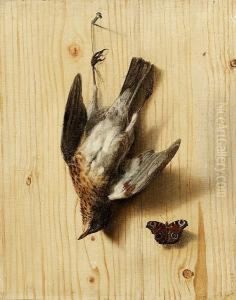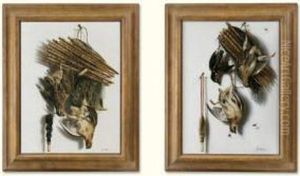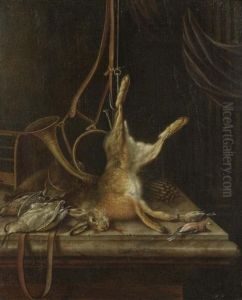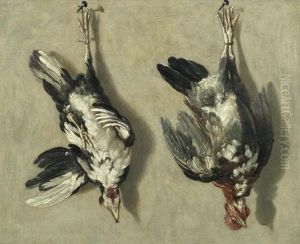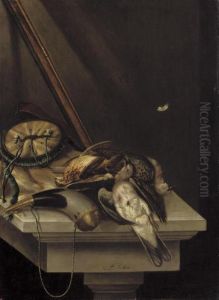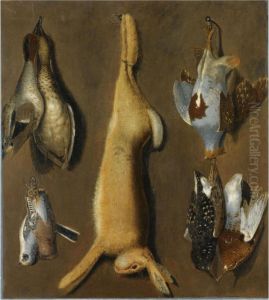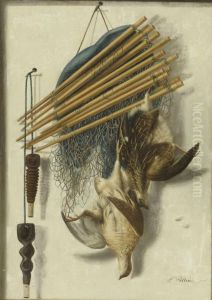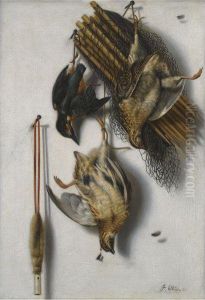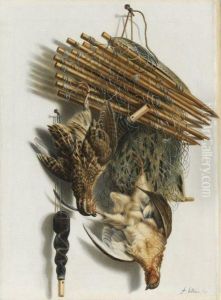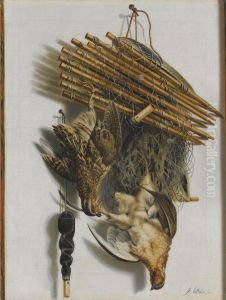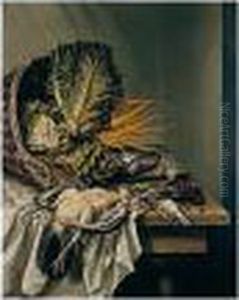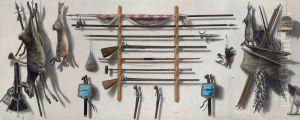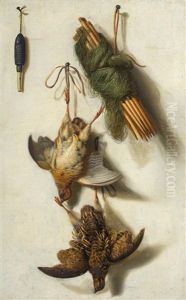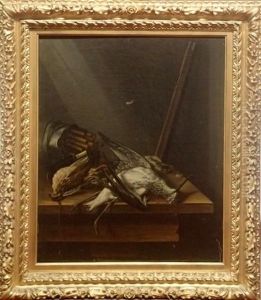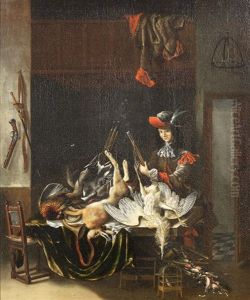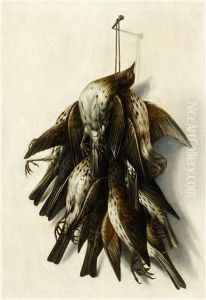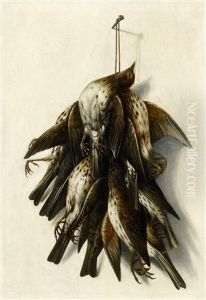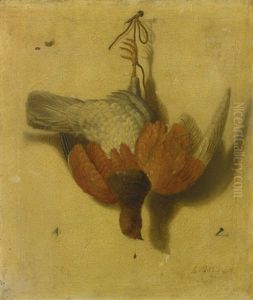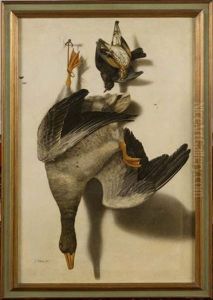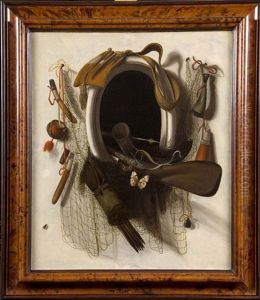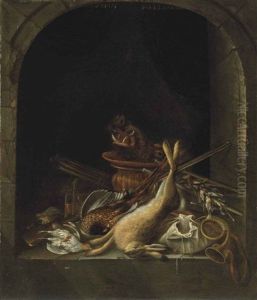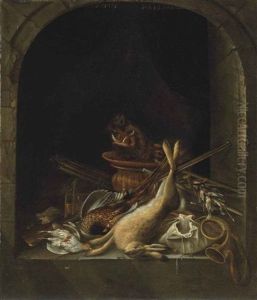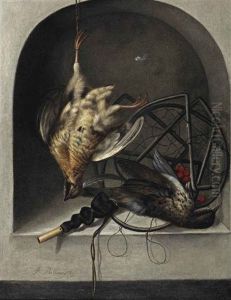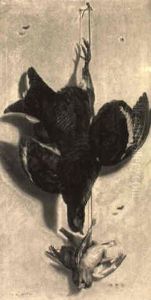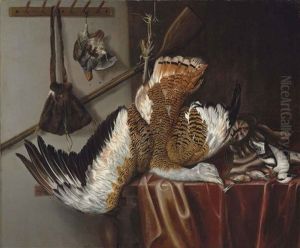Jacobus Biltius Paintings
Jacobus Biltius, also known as Jacob Biltius, was a Dutch Golden Age painter renowned for his still life and trompe-l'œil compositions. Born in The Hague in 1633, Biltius was a part of the prolific period of Dutch art that celebrated domestic interiors, landscapes, and minutely observed still life paintings. His work is characterized by a meticulous attention to detail and a keen interest in rendering textures and surfaces with realism.
Biltius's artistic journey began under the tutelage of notable artists in the Dutch Republic. He was initially trained by his father, who was also an artist, before studying under the guidance of renowned painters of the time. His early works were influenced by the prevailing styles of Dutch still life painting, but he soon developed a distinctive approach that emphasized the illusion of reality, a technique that became a hallmark of his career.
Throughout his career, Jacobus Biltius specialized in game still lifes and trompe-l'œil scenes, a genre that involves painting objects with such precision and detail that they appear to be three-dimensional. This style was particularly popular in the 17th century, as it showcased the artist's skill in deceiving the viewer's eye into believing the painted objects were real. Biltius excelled in this genre, creating compositions that featured hunting trophies, firearms, and game, rendered with exceptional realism.
In addition to his still lifes, Biltius occasionally painted scenes of everyday life and portraits, though these are less well-known. His ability to capture the texture of fur, feathers, and metal objects in his still lifes brought him considerable acclaim during his lifetime. Biltius's work was sought after by collectors and art lovers in the Dutch Republic and beyond, reflecting the high esteem in which he was held.
Jacobus Biltius spent most of his career in The Hague, where he contributed to the city's vibrant artistic community. His paintings are now part of collections in major museums and galleries around the world, where they continue to be appreciated for their craftsmanship and historical significance. Biltius passed away in 1681, leaving behind a legacy that cements his place among the notable artists of the Dutch Golden Age. His work not only provides insight into the artistic trends and cultural values of his time but also serves as a testament to the enduring appeal of realism in art.
